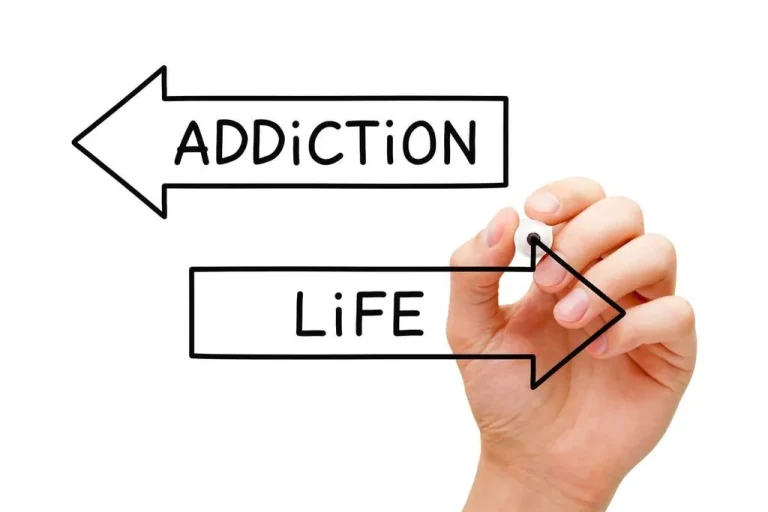
Furthermore, abstinence remains a gold standard treatment outcome in pharmacotherapy research for drug use disorders, even after numerous calls for alternative metrics of success (Volkow, 2020). Models of nonabstinence psychosocial treatment for drug use have been developed and promoted by practitioners, but little empirical research has tested their effectiveness. This resistance to nonabstinence treatment persists despite strong theoretical and empirical arguments in favor of harm reduction approaches. Observing short-term abstinence effects across potential behavioral addictions is vital for informing https://ecosoberhouse.com/ understanding about how addiction-related symptoms (withdrawal, craving and relapse) might manifest across these behaviors. This review aimed to synthesize existing research evidence on short-term abstinence effects across potential behavioral addictions in light of (1) manifestations of withdrawal, craving and relapse, and (2) benefits or counterproductive consequences of abstinence. We reviewed 47 prospective studies examining effects of short-term abstinence across six potential behavioral addictions (exercise, gambling, gaming, mobile phone use, pornography use, social media use).
- However, it is also possible that adaptations will be needed for individuals with nonabstinence goals (e.g., additional support with goal setting and monitoring drug use; ongoing care to support maintenance goals), and currently there is a dearth of research in this area.
- A critical implication is that rather than signaling a failure in the behavior change process, lapses can be considered temporary setbacks that present opportunities for new learning to occur.
- A specific process has been described regarding attributions that follow relapse after an extended period of abstinence or moderation.
- Future research must test the effectiveness of nonabstinence treatments for drug use and address barriers to implementation.
- Because an increase in self-efficacy is closely tied to achieving preset goals, successful mastery of these individual smaller tasks is the best strategy to enhance feelings of self-mastery.
International Gambling Studies
While having significant implications for behavioral addiction treatment research, the effects of long-term abstinence fall outside the scope of the present review. The present review instead focuses on short-term abstinence (hereafter termed ‘abstinence’ unless otherwise specified). Short-term abstinence, for the purposes of the present review, abstinence violation effect refers to two kinds of abstinence periods. The first refers to the first 4 weeks of a non-temporary, indefinite abstinence period (i.e., a genuine cessation attempt). This may be regarded as ‘short-term’ because while participants are intending to quit the behavior completely, the focus here is on the experience of early abstinence.
Inflammatory markers and negative mood symptoms following exercise withdrawal
Specifically, we focus on recent, representative findings from studies evaluating candidate single nucleotide polymorphisms (SNPs) as moderators of response to substance use interventions. It is important to note that these studies were not designed to evaluate specific components of the RP model, nor do these studies explicitly espouse the RP model. Also, many studies have focused solely on pharmacological interventions, and are therefore not directly related to the RP model.
Relapse Prevention
For example, all studies with SUD populations could include brief questionnaires assessing short-and long-term substance use goals, and treatment researchers could report the extent to which nonabstinence goals are honored or permitted in their study interventions and contexts, regardless of treatment type. There is also a need for updated research examining standards of practice in community SUD treatment, including acceptance of non-abstinence goals and facility policies such as administrative discharge. Despite the growth of the harm reduction movement globally, research and implementation of nonabstinence treatment in the U.S. has lagged.
Empirical findings relevant to the RP model
- Also, many studies have focused solely on pharmacological interventions, and are therefore not directly related to the RP model.
- While a lapse might prompt a full-blown relapse, another possible outcome is that the problem behavior is corrected and the desired behavior re-instantiated–an event referred to as prolapse.
- In many cases, initial lapses occur in high-risk situations that are completely unexpected and for which the drinker is often unprepared.
- With the right help, preparation, and support, you and your loved ones can still continue to build a long-lasting recovery from substance abuse.
- Harm reduction therapy has also been applied in group format, mirroring the approach and components of individual harm reduction psychotherapy but with added focus on building social support and receiving feedback and advice from peers (Little, 2006; Little & Franskoviak, 2010).
- Shiffman, Gwaltney and colleagues have used ecological momentary assessment (EMA; [44]) to examine temporal variations in SE in relation to smoking relapse.
- The studies reviewed focus primarily on alcohol and tobacco cessation, however, it should be noted that RP principles have been applied to an increasing range of addictive behaviors [10,11].
It is currently not clear, however, how a small indulgence, which itself might not be problematic, escalates into a full-blown binge [29]. In conclusion, the abstinence violation effect is a psychological effect that impacts those in recovery, as well as those who are focused on making more positive behavioral choices in their lives. By reframing lapses as learning opportunities and teachable moments, cultivating self-compassion, and seeking support, individuals can navigate these challenges more effectively, increasing their chances of leading a healthier lifestyle.
Specific Intervention strategies in Relapse Prevention
- AVE occurs when someone who is striving for abstinence from a particular behavior or substance experiences a setback, such as a lapse or relapse.
- Abstinence stands in contrast to concepts such as limited consumption or self-restraint, because the abstinence model requires complete avoidance of a substance or behavior.
- In its original form, RP aims to reduce risk of relapse by teaching participants cognitive and behavioral skills for coping in high-risk situations (Marlatt & Gordon, 1985).
In many cases, initial lapses occur in high-risk situations that are completely unexpected and for which the drinker is often unprepared. In relapse “set ups,” however, it may be possible to identify a series of covert decisions or choices, each of them seemingly inconsequential, which in combination set the person up for situations with overwhelmingly high risk. These choices have been termed “apparently irrelevant decisions” (AIDs), because they may not be overtly recognized as related to relapse but nevertheless help move the person closer to the brink of relapse. A critical difference exists between the first violation of the abstinence goal (i.e., an initial lapse) and a return to uncontrolled drinking or abandonment of the abstinence goal (i.e., a full-blown relapse).



